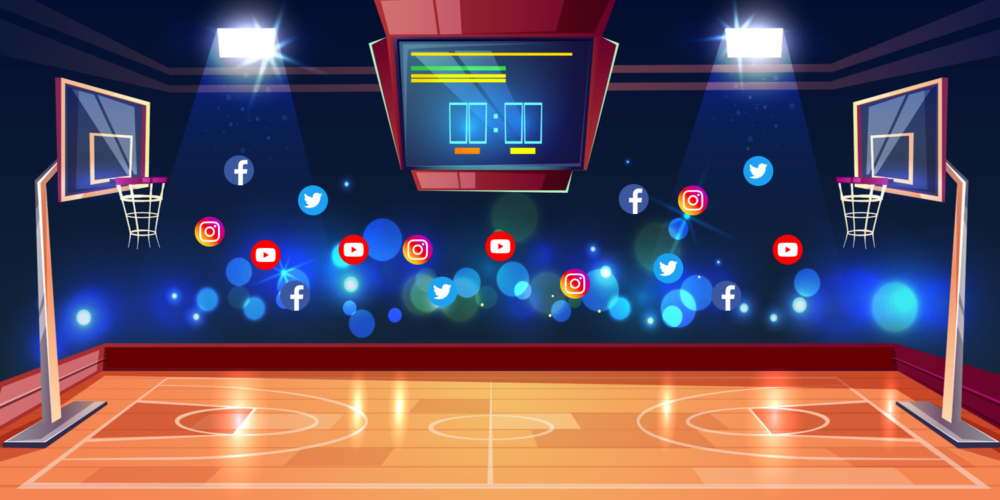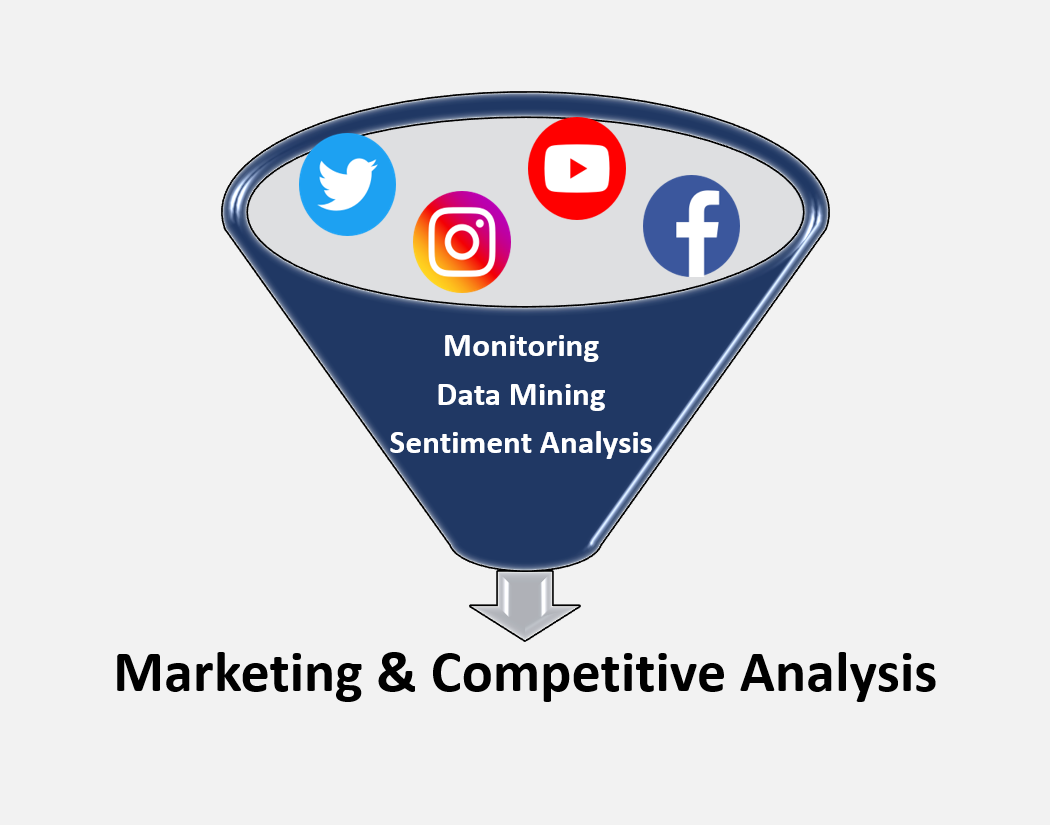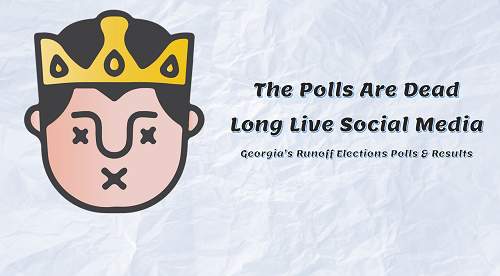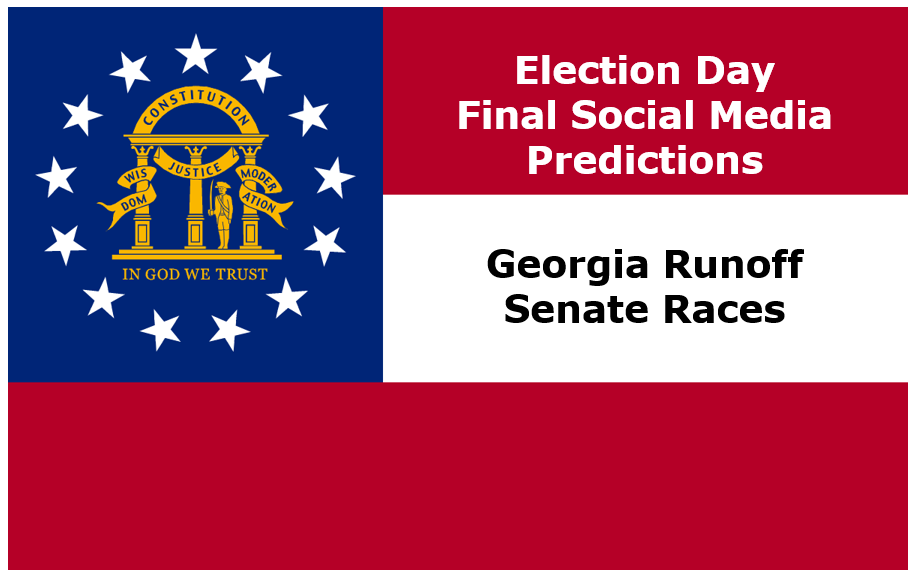NFL Teams – Who Is Winning in Social Media?
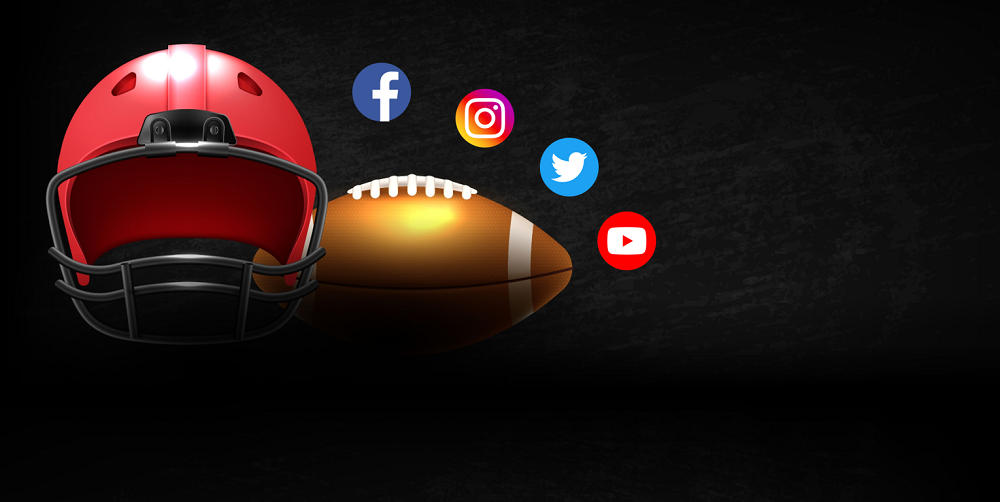
The NFL is the richest professional sports league in the world. The total revenue of all 32 NFL teams was over 15 billion U.S. dollars in 2019. In order to maintain and grow its visibility, relevance and revenue in the US and the world, the NFL and its teams have developed a fantastic marketing strategy.
A few years ago, the NFL understood that it had to be in peoples’ minds and TVs for most, if not all, of the year, as opposed to just Fall and Winter. It had to keep the interest in the game all year round and it did so by stretching and scheduling the important events – scouting, draft, preseason, regular season, playoffs and Superbowl – throughout the year, thus keeping football in the news continuously.
The NFL also recognized, early on, the importance of digital technology in its strategy, from different ways to access content via mobile phones, to well designed web pages (for all teams), and to strong participation in social media.
The marketing strategy on social media involves engagement of all teams, on all social networks (but primarily on Facebook, Instagram, Twitter and YouTube) and strong content generation and delivery. The NFL uses a large number of influencers to create content on its social platforms and engage their audiences. In doing so, it recognizes the importance of engaging a broad range of influencers in order to diversify the content and attract the interest of the casual fan (who might not normally look for football content). Moreover, the NFL relies on teams and players to spread content on their own social platforms, and it helps them by providing a repository of up-to-date images, videos and news, that players and teams can post on their accounts.
Which are the biggest teams on social media?
When you add up fans on Facebook, followers on Instagram and Twitter, and subscribers on YouTube, the Dallas Cowboys is the leader with over 16 million fans (let’s call them all “fans” for short). The New England Patriots are a close second with just under 16 million fans. In third place are the Pittsburgh Steelers with 13.6 million fans. All other 29 teams have fewer than 10 million fans.
The figure below shows the top 13 NFL teams on social media, considering the sum of the fans, followers and subscribers on the four main social networks (Data collected on March 10, 2021).
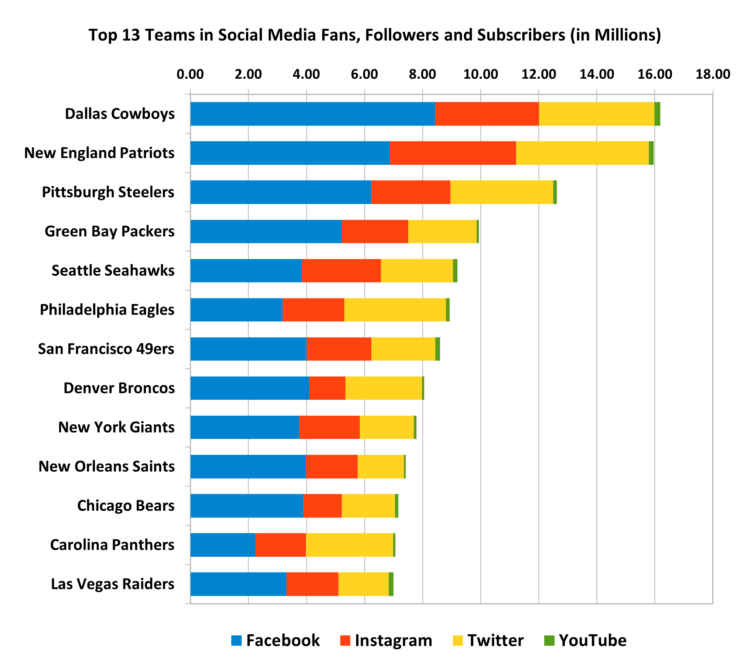
The table below shows the detailed breakdown of fans, followers and subscribers per team and per social network, for all 32 teams. Here we can see the Cowboys lead overall, and lead in Facebook fans, whereas the Patriots lead in Instagram and Twitter followers, but take 2nd place overall. Curiously, the leader in YouTube subscribers are the Cleveland Browns, which are only 20th place overall. About 23 teams have their biggest following on Facebook; 6 teams have more followers on Twitter, and only 3 teams have more followers on Instagram. YouTube is certainly used, but the number of subscribers is much smaller than in the other 3 social networks.
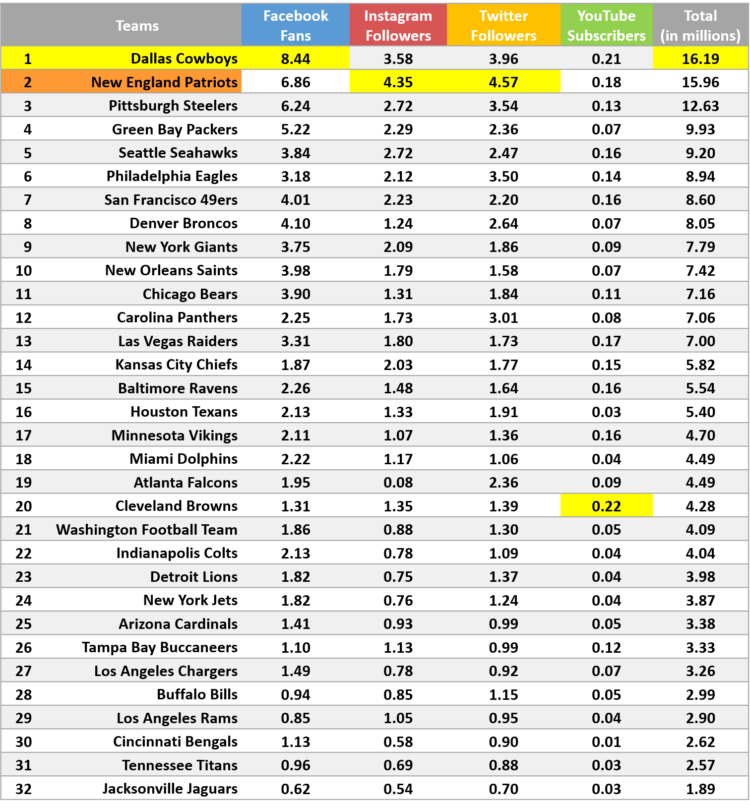
Sure, fans are great. But what about money and trophies?
The Dallas Cowboys are not only the leaders in social media fans, but they are also the team with highest revenue, making $980 million in 2019. But although they have 8 Superbowl appearances (5 wins, 3 losses), the last time they played a Superbowl was 1995 (they won)! That shows the Cowboys have a very loyal base of supporters which continue generating revenue despite its long dry spell in trophies.
The second place team in revenues is the New England Patriots, also the second in social media fans. But contrary to the Cowboys, the Patriots are the team with most Superbowl appearances – 11 (6 wins, 5 losses).
The first figure below shows the Superbowl appearances (up to Superbowl LV, 2020 season) by team revenue (data from 2019). The second figure plots the total social media fans by team revenue. On both counts, we see that the Cowboys and the Patriots are a notch above the rest.
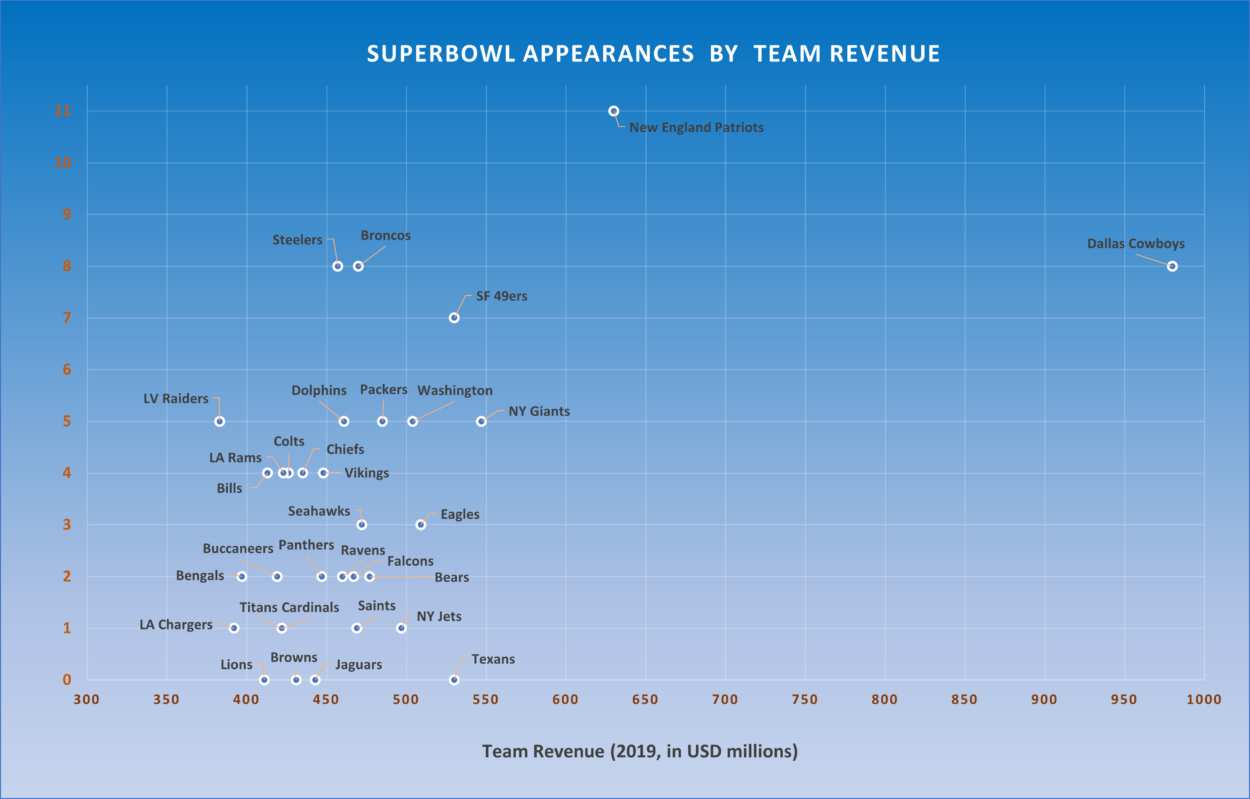
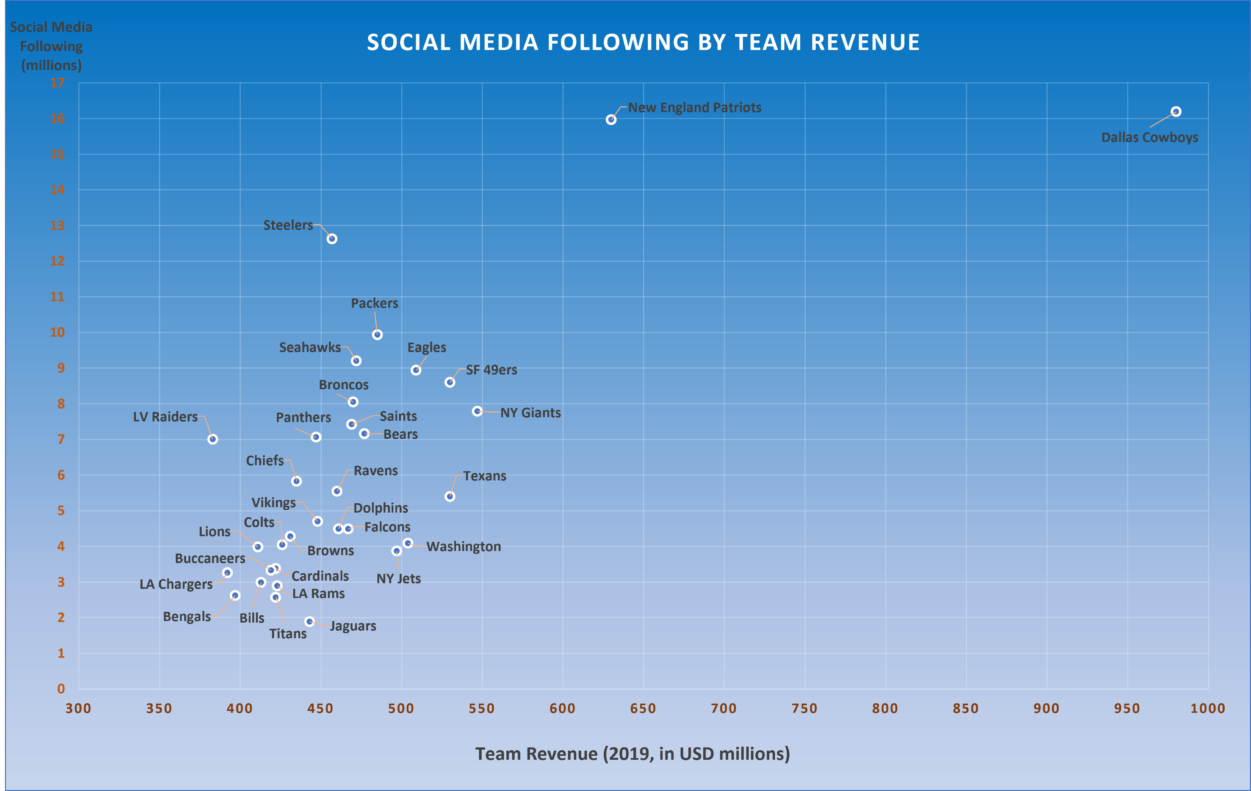
Did the Superbowl have any effect on number of social media fans?
When we looked at how many additional fans each of the 14 teams got through the playoffs, we see that all of them gained somewhat overall, although noticeably, some team lost fans on Facebook, but gained in the other social networks.
Looking at the 2 Superbowl teams – Tampa Bay Buccaneers and Kansas City Chiefs – we see that both gained fans during the playoffs, and peaked in gains during and immediately after the final game. The figures below show the daily evolution of fans on Facebook and followers on Instagram for both teams for 30 days, from the day before the second round of playoffs (Jan/15) until a week after the Superbowl (Feb/14). We see that their Instagram accounts grew more (percentually) than their Facebook accounts, with special distinction to the Buccaneers Instagram, growing 30.78% in the period.
Moreover, we can see that on the days after the games the fans showed their appreciation even more, by following the teams social media accounts in bigger numbers. This is true even in the case of the Chiefs Superbowl defeat.
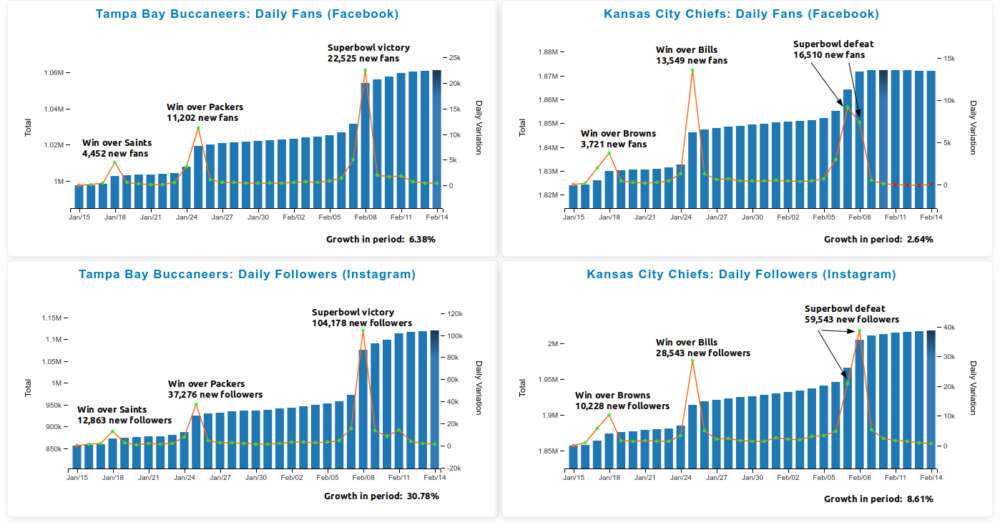
What’s next?
Clearly, social media is a major component of NFL and the teams marketing strategies. With content and advertising delivered on social media 24 hours a day, marketeers know they need it to create and maintain engagement of existing supporters, bring in new fans (not only football fanatics) and generate new revenue.
But there is plenty of room for improvement. The NFL may be the richest league in the world, but it still pales in terms of social media when compared to other big sports, like soccer. As a sobering comparison, the top Spanish soccer teams, Real Madrid and Barcelona, each has more than 100 million fans on Facebook, and more than 90 million followers on Instagram. These teams have massive international support. On the positive side, the NFL has enormous potential to grow internationally, and so, they will have a lot of work ahead.
Cover image Football vector created by Kerfin7.
Odysci
Related posts
